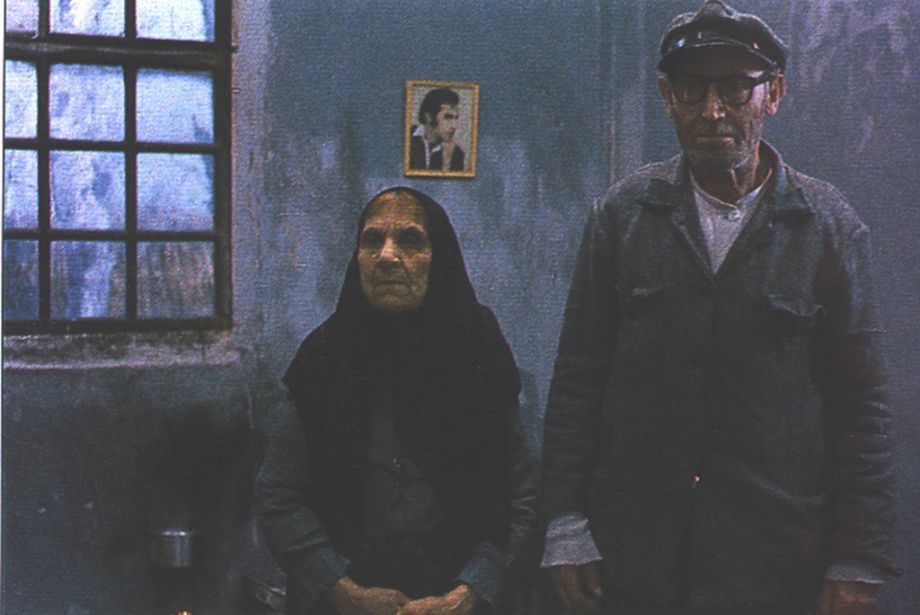One of the seminal works of the Iranian New Wave, Sohrab Shahid Saless’ Still Life is an eminently poignant exercise in existential temporality, framed with a neo-realist simplicity. The film follows the tedious life of Muhammad Sardari (Zadour Bonyadi), a railroad guard whose sole job is to align and realign the railroad tracks of a crossroad several times a day. He lives a simple life in a small box-like house with his wife (Zahra Yazdani), a carpet weaver. One day he is informed of his retirement, an event that displaces him not only of an income but also his home.
The film introduces the quotidian mundaneness of Sardari’s life with elegance and minimalist camera work, letting long takes set at low angles do most of the work in establishing the austerity of his existence—a pace that he is merely complacent with, but one would be hard pressed to call Sardari happy. Indeed, he spends his spare time doing little more than sitting, eating and smoking tobacco—an unchallenging life with an idleness that is at times perplexing for the viewer to understand, though the film is never challenging or condescending towards Sardari.
It would be perhaps a little too easy to call this a slice-of-life poverty film, given that Still Life is clearly more interested in the temporality of existence, particularly Sardari’s. Its fascination with time is treated with sardonic amusement; yes, Sardari has so much of it, and yet he is both displaced by time as well as being ruled by it, perhaps the natural outcome of the structure of his job. When asked by the senior railroad staff of his age, he’s uncertain if he’s 60 or 70. At home, he obsessively winds a clock that ticks with unnerving stillness, making the tone of his household that much more cold and empty. The film also plays with discontinuity in strange, seemingly haphazard ways through its editing. Sardari’s son visits from the military, but he’s there one moment, gone the next, replaced by a previously missing Sardari and visiting carpet purchasers.
Retirement provokes Sardari out of his lifelong funk, taking him to a head office where he helplessly fails to defend his right to continue working in what appears to be a Kafka-like situation. He is told to ask one official after another, eventually being told that the decision is final. There is no discussion about retirement funds or plans for his living expenses and placement following his retirement. This miscommunication is puzzling for both Sardari and the viewer; it almost seems like Sardari confuses a modern concept like retirement for being fired, an action that he cannot begin to comprehend. The confusion continues when his replacement shows up at his house, presumably there to move in. Yet at first Sardari continues to go to work, alongside the new guy, and even invites him in for tea and food later on. It’s a wordless, absurd moment.
If the film is rooted in any kind of social commentary, it is about Iran’s liminality between pre-modernity and modernity. Sardari is employed by the railways, the pinnacle of modernity, but he lives his life as if stuck in a past in which rurality made life extremely simple. Life could be as straightforward as buying bread and sugar once a week, an activity so plain and singular, and yet Sardari keeps forgetting to do it, to his wife’s chagrin. One of the best scenes in the film takes place early on when a herd of sheep slowly makes its way across the railroad; the film luxuriates in allowing the symbolic crossroads to resonate cinematically. A nomadic culture dominated by agriculture is replaced forcibly—by the then-ruling Shah and his father before him—by the infrastructure of modernity. Yet his attempts were half-hearted and moderately successful, and Sardari is an excellent case study of its alienating effects.

